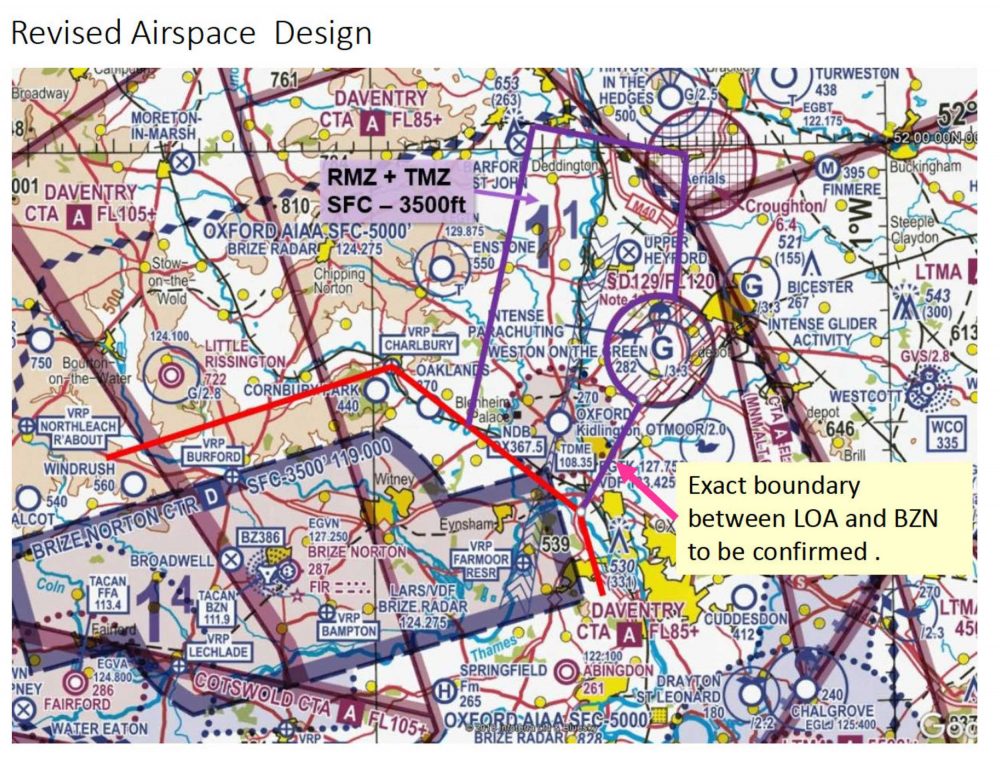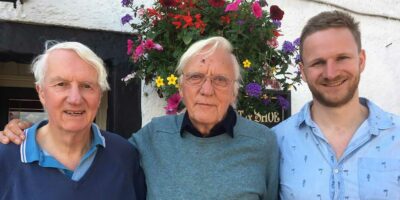London Oxford Airport has revised its airspace proposal following a public consultation and has cut its ambition from a Class D airspace to a simpler design based on the model in place at Hawarden.
The revised proposal has a Radio and/or Transponder Mandatory Zone to 3,500ft. London Oxford Airport (LOA) gave a presentation on the revised airspace proposal, prior to it being submitted to the CAA, for interested parties including AOPA.
AOPA’s report said LOA had listened to feedback given at the consultation stage where 98% of responses were negative, and that they hoped the revised proposal addressed the majority of objections raised.
For flights within the RMZ/TMZ pilots must comply with ONE of the following:
(a) Establish two-way RTF communication with Oxford Radar passing flight details before entering the RMZ and maintain communication within the RMZ. Flight details comprise:
- Callsign
- Aircraft type
- Position
- Level/altitude
- Intentions of the flight.
(b) Display the Oxford Frequency Monitoring Code (with mode C, if available), whilst monitoring Oxford Radar prior to entering and within the RMZ.
(c) Non-radio aircraft should contact Oxford ATC prior to commencing any planned flights that will enter or cross the RMZ for authority to enter the RMZ.
(d) Conduct flight in accordance with valid Letter of Agreement with Oxford ATC if operating from a site within the RMZ.
LOA was asked to re-consider the northern boundary of the RMZ/TMZ as this is likely to cause increased traffic around Hinton in the Hedges and Turweston with pilots avoiding the RMZ/TMZ.
Kerry Wood of Osprey Consulting Services which helped compile the proposal, said, “Whilst we accept that some of the General Aviation community will still have reservations about certain aspects of our proposal, we hope that there is an appreciation that we take your concerns seriously and have sought to mitigate as many as possible with our modifications.
“We all appreciated the healthy discussion concerning our design modifications following the consultation feedback and will reflect on some of the feedback received during the afternoon.”
AOPA’s full report of the presentation is here













6 comments
While better than the original proposal, this is still unacceptable, it’s going to put traffic in conflict with glider and light aircraft operations at Hinton, not to mention the busy parachute operation.
I can see this causing lots of infringements as it’s so close to the Hinton circuit pattern.
There is no reason the zone needs to go that far north at low level, a much better option would be for the zone to stop south of the Upper Heyford runway for anything below 1500ft and only be above 1500ft north of there. This would allow a much bigger corridor for transit. Upper Heyford is just over 6n north of Oxford, which is elevation 270ft, so any aircraft on a 3 deg ILS should be above 2000ft by that point, which gives an acceptable 500ft separation.
Let’s remember Oxford is far less busy nowadays than it was when it was a busy training airfield with only an ATZ, around 1/4 of the movements now. This restricted airspace is only wanted for the ultra rich in their executive jets.
If they want more separation then a 5.5deg ILS should be installed (like at London city) which will keep them higher.
I agree. Mitigating a perceived problem at Oxford will create a much greater problem around Hinton and Turweston if new proposals are accepted. I agree that the zone surface to altitude area should not extend so far North.
I agree with the above comments to the latest proposal from Oxford.
When flying near Hawarden, I squawk the FMC , and listen on their frequency, and then I can fly in their zone, without needing to route round it.
I’m a low hours pilot, but must be missing something, as that doesn’t seem that difficult, and avoids the conflict on the boundaries of the zone.
For clarity, that’s their RMZ, not ATZ.
On the last 4 occasions I have flown south to north Planning to go near Kidlington in my Bonanza.
I have called Kidlington when approaching Didcot (after debating whether I should stay with Farnborough, call Brize or try Benson!) On all occasions was told to standby. And on all occasions by the time I got a ‘pass your message’ from them, I was level with them and it was pointless talking to them.
And these were fairly naff weather poor days.
So now I just plan to avoid them and the danger area. So that does not cause choke points does it!
Does anyone ever remember the Qinetiq airspace study after the Glider/Military Grob 115. Google it if you want to good read about this particular piece of airspace.
Lessons have not been learned in my opinion.